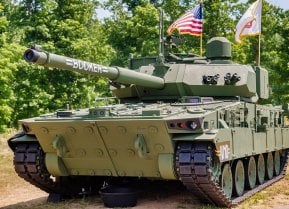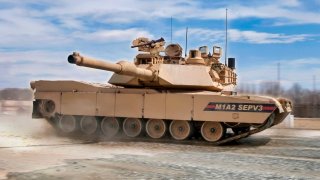The M1 Abrams SepV3 Might Be the Best Tank on Earth Right Now
The latest M1 Abrams tank variant, the SepV3, represents the pinnacle of this evolution. Commissioned in 2015, the SepV3 boasts an M256 120mm smoothbore cannon capable of firing advanced rounds, enhanced infrared targeting, and a modular design that facilitates future upgrades.
Summary: The latest M1 Abrams tank variant, the SepV3, represents the pinnacle of this evolution. Commissioned in 2015, the SepV3 boasts an M256 120mm smoothbore cannon capable of firing advanced rounds, enhanced infrared targeting, and a modular design that facilitates future upgrades. Powered by a Honeywell AGT1500 gas turbine engine, the SepV3 variant exemplifies the balance between raw power and technological sophistication, proving that main battle tanks remain indispensable tools of warfare in the 21st century.
The 'New' M1 Abrams Tank SepV3 Is Coming
Thanks to the M1 Abrams series of main battle tanks, the U.S. military has some of the most capable armored vehicles anywhere.
This powerful tank family has been the mainstay of the U.S. Army’s armored corps for four decades. The Abrams MBT gained further attention after its delivery to Ukraine to aid Kyiv against Russia’s invasion. The first American-made Abrams tanks arrived in Kyiv last fall, and they play an important role on the frontlines of the war.
While every M1 Abrams tank variant featured an array of advanced capabilities when introduced, the most recent SepV3 model (System Enhancement Package version 3) is especially capable.
The History of the Abrams Series of MBTs
The Abrams family of tanks traces its start to the early days of the Cold War, when the U.S. and West Germany collaborated to develop a single MBT replacement for American M60 and German Leopard 1 tanks.
The resulting MBT-70 prototype was quite sophisticated, featuring a range of new technologies. However, budget restraints and design controversies led the Department of Defense to suspend the program. Instead, the Army allocated funds to a new MBT program designated as XM815, which resulted in the Abrams tank.
When the M1 Abrams was first introduced, it was equipped with a wide range of new technologies, including a computer fire control system, advanced Chobham composite armor and a multi-fuel turbine engine. The original Abrams was also fitted with a 120mm main gun, a 1,500 horsepower turbine engine, and advanced tracking systems and armor-piercing capabilities. As threats evolved over the years, so did the Abrams’ variants.
Introducing Sepv3
The U.S. Army placed an order with manufacturer General Dynamics Land Systems in 2015 to upgrade the tank series to the M1A2 configuration. Armament-wise, the tank is equipped with an M256 120mm smoothbore cannon, which can fire M829A4 advanced kinetic energy and advanced multi-purpose rounds to defend the armored vehicles. Each SepV3 tank is also fitted with an enhanced forward-looking infrared to detect targets.
The tank’s layout is similar to its preceding variants, with the driver’s cab positioned at the forward center hull, and the power-pack sitting in the rear.
Why the M1 Abrams Sepv3 Variant Tank Is So Formidable
The SepV3 tanks are powered by a Honeywell AGT1500 gas turbine engine, which provides 1,500 horsepower. Perhaps more important, the tank has a modular design that will allow for future technologies to be incorporated more easily.
To anyone who thought that tanks were increasingly obsolete in the modern era of warfare, the conflict in Ukraine has proven otherwise. Main battle tanks are still critical assets in war. In fact, the Army is currently prioritizing the development of a new top-of-the-line tank variant. Until that tank arrives, the U.S. Army is well equipped with the M1 Abrams Sepv3 variant in tow.
About the Author: Maya Carlin
Maya Carlin, National Security Writer with The National Interest, is an analyst with the Center for Security Policy and a former Anna Sobol Levy Fellow at IDC Herzliya in Israel. She has by-lines in many publications, including The National Interest, Jerusalem Post, and Times of Israel. You can follow her on Twitter: @MayaCarlin. Email the author: [email protected].


